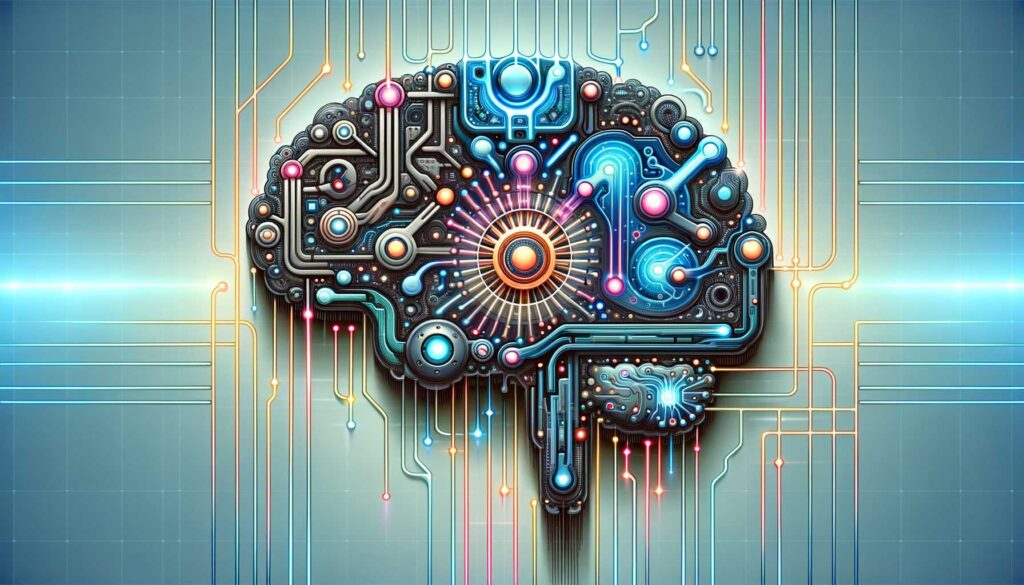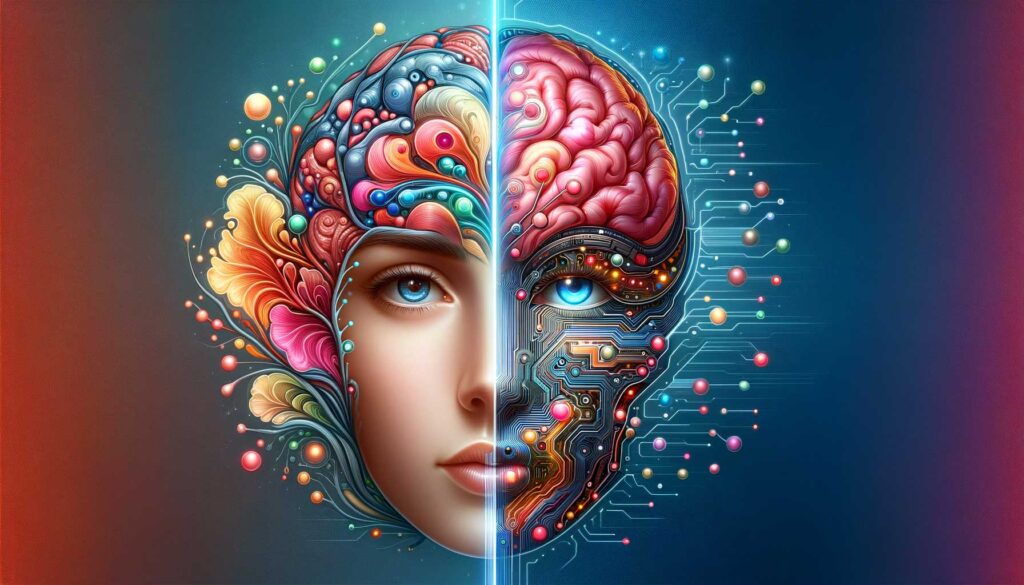Professional translation agencies have long used machine learning, but today, they use a combination of machine learning and large language models to increase efficiency. While machine learning technology has made the translation process more effective, technology has continued to make advances in automated translations. This is where AI and large language models come into play.
The first AI released to the public was ChatGPT. The AI was released in November 2022; since that time, AI has become an invaluable tool for a wide range of tasks, including translation work. AI (artificial intelligence) works with neural networks, similar to machine learning. The neural network technology is a deep learning component that trains models on large datasets to perform tasks. The technology has become increasingly popular and useful across a wide range of industries, including translation.
If you’ve ever used ChatGPT or another AI, you’ve probably noticed that the tool’s language appears to be almost human. The basis of the human-like text is a technology called a large language model.
In this article, we’ll take a look at what large language models are, how they work, and more.
Table of Contents
What is a Large Language Model?

A large language model (LLM) is an AI that’s designed to understand and generate human-like text. The model uses deep learning techniques and neural network architecture to process and generate natural language. The large language model technology easily excels at various language-related tasks, including translation.
A large language model is trained on extensive datasets that contain billions (more) of words. The datasets can come from different sources, such as books, articles, websites, and more. An LLM learns by predicting the next word in a given sequence, which is a process called unsupervised learning. The large language model uses repetition and exposure to learn grammar, semantics, and more.
LLMs can be used for a wide range of tasks. For instance, they can be trained in sentiment analysis, named entity recognition, to play games such as chess, and more. A large language model can be used as a chatbot, virtual assistant, content generator, and language translation system.
How Do LLMs Work?

Large language models use a step-by-step process to train and infer. Here’s an overview of how LLMs work.
1. Data Collection
The first step in training a large language model is to create a vast database of textual data. The data may come from books, articles, and other written content. The more diverse and comprehensive the dataset, the better the LLM’s understanding of the language.
2. Tokenization
The next step in training a large language model is called tokenization. Tokenization involves breaking the text down into smaller units called tokens; they can include words, subwords (splitting a phrase, sentence, paragraph, etc. into smaller units), or characters. This step depends on the specific model and language. Tokenization makes it easier for the model to process and understand text at a much deeper level.
3. Pre-Training
The third step is pre-training the large language model, which allows the LLM to learn from the tokenized text data created in step 2. The large language model learns how to predict the next token in a sequence. This process helps the LLM understand human language patterns, grammar, semantics, and more.
4. Transformer Architecture
The transformer architecture is an essential part of large language models. These play a significant role in the success of LLMs. The transformer architecture works to organize and understand sentences by looking at how the words relate to each other. Through this process, the large language model can understand the context and connections within the text.
Transformers make it easier for AI (such as ChatGPT) to excel at understanding and generating human-like text. They help a large language model to understand and process language, making LLMs a powerful tool for natural language tasks.
5. Fine-Tuning
During this step, the LLM is fine-tuned for specific tasks. This process involves giving the LLM task-specific labelled data. This makes it easier for the large language model to learn the particulars of the task. Fine-tuning allows the large language model to specialize in certain tasks, such as analysis, Q&A, and more.
6. Inference
Inference is the process of using the LLM to generate text or perform specific tasks that are language-related. For instance, if the large language model is presented with a prompt or question, it’s able to generate a response that makes sense, offer an answer by relying on what it’s learned, and contextual understanding.
7. Contextual Understanding
The large language model easily captures context and generates the appropriate responses. It uses the information provided when training on the dataset, generating text that considers the preceding context. Self-attention mechanisms in the transformer architecture work to help the LLM capture long-range dependencies and contextual information.
8. Beam Search
During the inference phase, an LLM uses a technique called beam search. This process is used to generate the most likely sequence of tokens. Beam search is a search algorithm that relies on exploring several paths during the sequence generation process. The LLM also keeps track of the most likely responses, based on a scoring mechanism. Beam search helps a large language model generate text that is coherent and of high quality.
9. Response Generation
Finally, an LLM generates responses by predicting the next token in a sequence based on the input data and the model’s learned knowledge. Generated responses can be creative and contextually relevant. The generated text sounds as if a human wrote it.
How Do LLMs and Humans Differ in the Way They Learn and Use Language?

A large language model and humans learn and use language in similar ways; however, there are some differences.
Similarities:
1. Learning from Examples
Both LLMs and humans learn language by exposure to examples. Humans learn from listening to others, reading, and conversation. A large language model, on the other hand, is trained on extensive datasets that include vast examples of language usage.
2. Contextual Understanding
Both LLMs and humans work to understand language in context. They both consider the surrounding words and sentences to learn the meaning of particular phrases and statements.
3. Pattern Recognition
Humans and a large language model are capable of recognizing language patterns. Over time, humans can develop an intuitive sense of grammar, syntax, and semantics. On the other hand, LLMs learn to predict the next word in a sentence due to their training.
Differences:
1. Humans: the language-learning process is quite complex. It involves inherent cognitive abilities, exposure to social interaction, and contextual understanding. The process also includes learning emotional and cultural nuances.
LLMs: learn through exposure to large databases. This causes a large language model to learn language through data and statistics. LLMs don’t develop an intuitive understanding of cultural and emotional nuances that humans learn.
2. Common Sense & World Knowledge:
Humans: rely on common sense and real-world knowledge for their language understanding. They can infer meanings based on background knowledge and experiences.
LLMs: on the other hand, a large language model learns by association and patterns it learns from data. LLMs don’t have real-world experiences or common-sense reasoning like humans.
3. Creativity & Originality
Humans: can generate unique and creative language. They can express original thoughts, emotions, and ideas. Humans can also “play” with language in ways that go beyond patterns and examples.
LLMs: rely on patterns they learn during their training process. A large language model can generate coherent and relevant information; however, their output texts are based on existing examples instead of true creativity.
4. Understanding Context Beyond Text
Humans: our understanding of language goes way beyond text and involves non-verbal cues, body language, and intonation. People can understand context in a much broader social and sensory context.
LLMs: mainly focus on textual data and may have a hard time grasping non-verbal nuances, such as sarcasm. Emotional cues are also difficult for a large language model to understand.
5. Ethical & Social Considerations
Humans: use ethical and social considerations in their use of language. They consider the impact of their words on others and (usually) respect cultural norms.
LLMs: Conversely, a large language model may generate text without ethical considerations. Their text can result in potential biases or consequences. For these reasons, humans must monitor the LLM’s output.
What are the Top 5 Large Language Models?
Here, we’ll explore some of the most popular examples of large language models available today.
1. GPT-4
GPT-4 was created by OpenAI and is the latest version of its large language model systems. This version came after GPT-3.5, which was launched in November 2022.
GPT-4 outdoes OpenAI’s previous models in that this version is more creative and includes visual comprehension and context. This large language model makes it easier for teams to collaborate on projects. It can also accept images as input data.
Moreover, GPT-4 can answer questions across about 26 languages. Its English accuracy is about 85.5%.
2. BERT (Bidirectional Encoder Representations from Transformers)
BERT was developed by Google and introduced the bidirectional pre-training of LLMs. Previous versions relied on autoregressive training (where the LLM takes input text and repeatedly predicts the next word or token). However, BERT has learned how to predict missing words in a sequence. The large language model does this through consideration of the preceding and following words in context. The bidirectional method allows BERT to understand more nuanced language dependencies.
3. Turning-NLG
Microsoft came out with Turning-NLG, a large language model that’s similar to GPT-4. The large language model is trained on a different dataset. It also has a different architecture than GPT-4. Turning-NLG is thought to be more accurate and efficient, too.
4. LaMDA
LaMDA is another large language model that was developed by Google. This LLM is designed to be informative and comprehensive. The large language model can generate creative texts (including poems, code, and more). The LLM is still in development; however, it does have the potential to revolutionize LLMs and the way humans interact with their computers.
5. Ajax
Ajax, created by Apple, is a fairly new LLM that is also under development. This large language model is expected to power a broad range of products and services in the App Store and through the Apple Music search engine.
Is ChatGPT a Large Language Model?
Yes! ChatGPT is a large language model. This LLM is available through your Internet browser and can be used to write large or small amounts of text, and lists, and for research purposes. ChatGPT uses an LLM that has been trained on extensive amounts of textual data found online and through other sources.
When using the LLM, the more precise your prompt is, the more accurate the chatbot’s answer. This large language model has developed a reputation for being easy to use. It allows users to write prompts in a desired style, tone, and format found in human language. Users can also customize details provided to the LLM, the language to use, and other customizations.
Is LLM an AI?
Yes! LLMs are a type of artificial intelligence (AI). AI refers to the development of computer systems that perform tasks usually done by a human. On the other hand, a large language model has been specifically developed for the natural language process and generation.
LLMs are built on neural network architectures, usually based on transformer models. They are trained on extensive amounts of textual data, to develop comprehension and generate human-like responses. A large language model can be trained for several different language processing tasks, including text completion, translation, and more.
Concluding Thoughts
Large language models are proving to be invaluable tools for a wide range of applications. They can be used for language translation, text summarization, and more. However, for these tools to be useful, they must be trained on a broad range of datasets that help the large language model to gain a deep understanding of human language.
A large language model excels at processing vast amounts of data and generating coherent text. Even so, LLMs lack the intuitive understanding, creativity, and contextual awareness of humans. There are also ethical considerations concerning bias and responsible use that are essential when using a large language model in real-world situations.
Overall, LLMs are highly useful tools that have a bright future, filled with exciting possibilities. They have the potential to work across a broad range of industries and for personal use now and in the future.
Read More:
